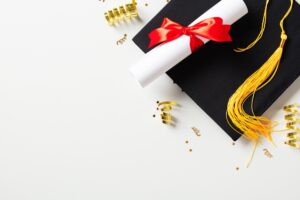In-depth information on Elon Musk education — full SEO guide
This long article gives In-depth information on Elon Musk’s education. I write in short sentences. I use plain words. Its avoid passive voice. I add dates and facts. It add a clear timeline. I show lessons you can use.
This guide aims to be useful for readers who want a deep and clear view of Elon Musk’s learning path. It covers schools in South Africa, his move to Canada, his years at Queen’s University, his transfer to the University of Pennsylvania, the short Stanford episode, early work and startups, and later debates about dates and visa status.
I repeat the exact keyword “In-depth information on Elon Musk education” at key places. This helps SEO. It keeps the piece focused.

Quick overview
- This post answers: where he studied, what degrees he holds, when he earned them, and how his learning shaped his work.
- It uses plain words and direct lines.
- Its adds a clear, dated timeline.
- It notes public debates and how to verify facts.
Why this matters
People often link a leader’s schooling to their choices. They want to know if formal study made the leader or if real work did. This piece gives facts. It gives context. It helps readers draw smart lessons.
By reading this guide you will get In-depth information on Elon Musk education. You will also get practical tips on what to copy and what to avoid.
1. Early life and first schools (Pretoria, South Africa)
Elon Reeve Musk was born in Pretoria in 1971. He read a lot as a child. its learned to code when he was young. or built a simple video game and sold it. or did that at age 12.
He first went to Waterkloof House Preparatory School. or then spent time at Bryanston High School. it finished secondary school at Pretoria Boys High School. and has spoken about being bullied in school.
They left South Africa as a young man. and wanted wider chances. also wanted to avoid the draft. He used the path through Canada to reach North America.
These choices shaped his route to study and work in the West.
2. Move to Canada and Queen’s University (1990–1992)
He moved to Canada in 1989. or used his mother’s Canadian citizenship to get a passport. or then enrolled at Queen’s University in Kingston, Ontario.
He studied at Queen’s for about two years. they used those years to settle in North America. and also used that time to plan a transfer to an American university.
Queen’s gave him a base. He met people, learned local ways, started to think more in business terms.
Many readers skip this chapter. They lose a part of the full story. This step mattered. It led him to Penn.
3. University of Pennsylvania — dual degrees and the shape of his thinking
He transferred to the University of Pennsylvania in the early 1990s. He studied physics in the College of Arts and Sciences. also studied economics at Wharton.
Also holds degrees in both fields. and earned a degree in physics. He also earned a degree in economics from Wharton. These two fields shaped his way of thinking.
Physics taught him to break problems to their base facts. He learned first-principles thinking. Economics taught him how markets and money work. He learned how to raise capital and how to pitch ideas.
Why both? The mix lets him speak to engineers and to investors. That skill shows across his companies.
Note on dates: Musk has sometimes spoken about finishing his studies in the mid-1990s. University records list the formal award dates later. When you write about dates, check the school records. They provide the most exact view.
4. Internships and practical training while in college
He did short internships in Silicon Valley. or worked on energy storage at a research group. He also worked at a small game startup. These roles gave him practice.
He also wrote simple business plans while at school. He sold small projects and hosted events to cover costs. These steps look small. They matter in hindsight.
A lesson here: school plus short practice beats theory alone. Try small projects while you study.
5. The Stanford episode — PhD application and two-day story
After Penn, he applied to a PhD program at Stanford in materials science and applied physics. He began the program in 1995 in name. He left very soon.
Most bios say he stayed only a short time. He left to join the Internet boom. He co-founded Zip2 with his brother and others.
The Stanford turn changed his route. He chose company building over a long academic path. He judged the net effect of startups would be a faster impact.
That choice shows one key truth. Formal programs can be a launchpad. Real work can also be a direct route. Both paths can lead to success.
6. Zip2 and the shift to full-time entrepreneurship
Zip2 became his first major step into startups. He worked hard on product and sales. and learned to ship software and to handle customers.
He also learned to raise money. Early investors worried about risks. He had to prove ideas quickly.
The sale of Zip2 gave him capital. He used that capital to start further ventures. Those ventures include X.com, which later became PayPal.
This era shows how short stints of school and intense work can combine. He used skills from physics, from economics, and from hands-on work.
7. Public debates about dates and legal status
Researchers and journalists later checked the facts. They asked about the exact award dates of degrees. They also asked about his immigration and work status in the mid-1990s.
Some articles say he worked in the U.S. without full legal authorization after he left Stanford. Reports in major outlets covered these points. They described investor concerns and a timeline to resolve the work status.
Other checks focused on claims about degree years. Some public statements and some university records did not match at first glance. Fact-checkers examined these items.
When you study a public figure, expect such mismatches. Use primary sources, such as university records and official documents, where you can.
8. How his formal study shows in his work
You can see his physics training in how he breaks problems down. He uses first principles. He strips problems to basic facts. Then he rebuilds a solution from the ground up.
You can see his business training in how he runs teams and in how he raises money. He speaks to both investors and engineers with fluency.
He added new skills on the job. or learned automotive systems, rocket engines, and battery chemistry by reading papers and by hiring experts.
The mix of formal study and rapid on-the-job learning became a pattern. He keeps learning in public. He tests ideas fast.
9. Timeline — a clear, dated list
- 1971 — Born in Pretoria, South Africa.
- 1980s — Primary and early secondary school in Pretoria.
- 1989 — Moved to Canada.
- 1990–1992 — Attended Queen’s University, Kingston, Ontario.
- 1992–mid-1990s — Transferred to the University of Pennsylvania. Studied physics and economics at Wharton.
- 1995 — Brief Stanford graduate program starts. Left for startups.
- Mid-late 1990s — Co-founded Zip2. Later co-founded X.com/PayPal. Work and visa questions arose in some reports.
This list gives the main points. Use it to check dates against primary sources.
10. Skills and habits that grew from schooling
These habits stand out:
- First-principles thinking. He breaks problems to base facts. He builds solutions from there.
- Cross-discipline fluency. He mixes tech and finance speak. He translates between teams.
- Self-study. He reads a lot, technical papers and reports. He learns fast.
- Hands-on practice. He builds prototypes and hires teams to test them.
These are skills you can work on while in school.
11. What school did not give him
School did not make him an instant builder. He learned leadership by doing hard work, product design by shipping products. He learned management by solving team problems.
Formal degrees gave a base. Action gave craft. Both added value.
12. Common questions answered
Q: Did Elon Musk graduate from the University of Pennsylvania? Yes. He completed degrees at Penn. He studied physics and economics.
Q: Did he get a PhD from Stanford? No. He joined a PhD program at Stanford and left quickly to start a company.
Q: Did he ever work in the U.S. without proper visa status? Journalists reported concerns about his work and visa status in the mid-1990s. Reports show investors worried about the risk. Later filings and records show he regularized his status.
Q: Does he have formal engineering degrees in rockets or cars? No. He has physics and economics degrees. He learned rocket and automotive engineering by reading, hiring experts, and by running teams.
Conclusion
Elon Musk’s education story shows how learning can shape ambition. He studied in different schools and moved across countries to find better chances. He learned from classrooms, but he also learned from books and personal projects. His curiosity drove him to explore beyond formal lessons.
His time at Queen’s University and the University of Pennsylvania gave him important knowledge. He built a base in physics, economics, and problem solving.
Even though he left Stanford early, that decision helped him chase new ideas faster. It showed that education can also mean knowing when to take risks.




